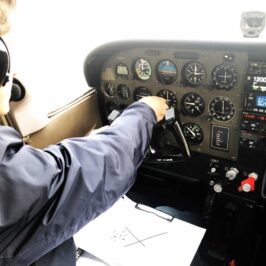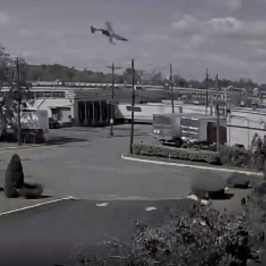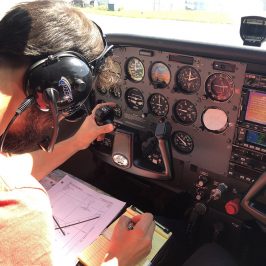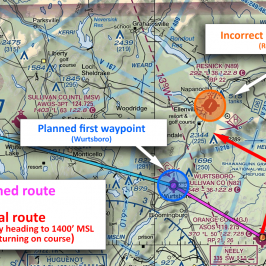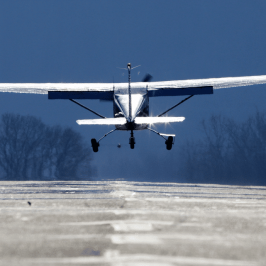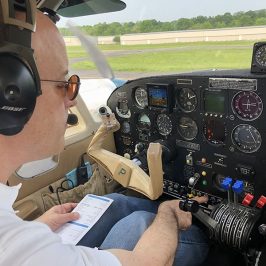(Continued from Part I)
Let’s move forward now assuming we have an airplane which is airworthy per these inspections, and has had all ADs complied with. Let’s consider the inevitable scenario in which the pilot discovers something which doesn’t look right, or isn’t functioning properly during a pre-flight inspection. As you know, an aircraft doesn’t have to be in perfect mechanical condition to be considered airworthy. 14 CFR 91.213 is the tool which allows us to continue when there are minor discrepancies which don’t affect the aircraft’s airworthiness, with certain stipulations.
14 CFR 91.213, Inoperative Instruments and Equipment
14 CFR 91.213 is one of those regulations which requires an eagle eye; really careful attention is required to truly understand its applicability and meaning. In short, this is the regulation which allows us to operate aircraft with inoperative instruments and equipment, provided, of course, they’re not required to maintain the aircraft’s airworthiness. (And pilots can’t fly aircraft with equipment which is unairworthy, right? Exception: A special flight permit, popularly known as a “ferry permit.” More on that later.)
Let’s have a look at the entirety of 14 CFR 91.213. For the purposes of our discussion, and contrary to the ‘eagle eye’ commentary prefacing this section, I’m going to suggest that you glance at what follows, but don’t try to fully read it at this time.
Take note of an edit inserted by your intrepid author – a divider which appears between (c) and (d). It is most certainly not part of the regulation. It’s red. See if you can find it.
§91.213 Inoperative instruments and equipment.
(a) Except as provided in paragraph (d) of this section, no person may take off an aircraft with inoperative instruments or equipment installed unless the following conditions are met:
(1) An approved Minimum Equipment List exists for that aircraft.
(2) The aircraft has within it a letter of authorization, issued by the responsible Flight Standards office, authorizing operation of the aircraft under the Minimum Equipment List. The letter of authorization may be obtained by written request of the airworthiness certificate holder. The Minimum Equipment List and the letter of authorization constitute a supplemental type certificate for the aircraft.
(3) The approved Minimum Equipment List must—
(i) Be prepared in accordance with the limitations specified in paragraph (b) of this section; and
(ii) Provide for the operation of the aircraft with the instruments and equipment in an inoperable condition.
(4) The aircraft records available to the pilot must include an entry describing the inoperable instruments and equipment.
(5) The aircraft is operated under all applicable conditions and limitations contained in the Minimum Equipment List and the letter authorizing the use of the list.(b) The following instruments and equipment may not be included in a Minimum Equipment List:
(1) Instruments and equipment that are either specifically or otherwise required by the airworthiness requirements under which the aircraft is type certificated and which are essential for safe operations under all operating conditions.
(2) Instruments and equipment required by an airworthiness directive to be in operable condition unless the airworthiness directive provides otherwise.
(3) Instruments and equipment required for specific operations by this part.(c) A person authorized to use an approved Minimum Equipment List issued for a specific aircraft under subpart K of this part, part 121, 125, or 135 of this chapter must use that Minimum Equipment List to comply with the requirements in this section.
* * * * * * THIS IS THE DIVIDER I WAS TALKING ABOUT! * * * * * *
(d) Except for operations conducted in accordance with paragraph (a) or (c) of this section, a person may takeoff an aircraft in operations conducted under this part with inoperative instruments and equipment without an approved Minimum Equipment List provided—
(1) The flight operation is conducted in a—
(i) Rotorcraft, non-turbine-powered airplane, glider, lighter-than-air aircraft, powered parachute, or weight-shift-control aircraft, for which a master minimum equipment list has not been developed; or
(ii) Small rotorcraft, nonturbine-powered small airplane, glider, or lighter-than-air aircraft for which a Master Minimum Equipment List has been developed; and
(2) The inoperative instruments and equipment are not—
(i) Part of the VFR-day type certification instruments and equipment prescribed in the applicable airworthiness regulations under which the aircraft was type certificated;
(ii) Indicated as required on the aircraft’s equipment list, or on the Kinds of Operations Equipment List for the kind of flight operation being conducted;
(iii) Required by §91.205 or any other rule of this part for the specific kind of flight operation being conducted; or
(iv) Required to be operational by an airworthiness directive; and
(3) The inoperative instruments and equipment are—
(i) Removed from the aircraft, the cockpit control placarded, and the maintenance recorded in accordance with §43.9 of this chapter; or
(ii) Deactivated and placarded “Inoperative.” If deactivation of the inoperative instrument or equipment involves maintenance, it must be accomplished and recorded in accordance with part 43 of this chapter; and
(4) A determination is made by a pilot, who is certificated and appropriately rated under part 61 of this chapter, or by a person, who is certificated and appropriately rated to perform maintenance on the aircraft, that the inoperative instrument or equipment does not constitute a hazard to the aircraft.
An aircraft with inoperative instruments or equipment as provided in paragraph (d) of this section is considered to be in a properly altered condition acceptable to the Administrator.(e) Notwithstanding any other provision of this section, an aircraft with inoperable instruments or equipment may be operated under a special flight permit issued in accordance with §§21.197 and 21.199 of this chapter.
[Doc. No. 18334, 54 FR 34304, Aug. 18, 1989, as amended by Amdt. 91-280, 68 FR 54560, Sept. 17, 2003; Amdt. 91-282, 69 FR 44880, July 27, 2004; Docket FAA-2018-0119, Amdt. 91-350, 83 FR 9171, Mar. 5, 2018] 14 CFR 91.213
The reason for this editorial insertion into 14 CFR 91.213 is for clarification. Everything prior to the red divider — which placed just above (d) — is related to Minimum Equipment Lists, i.e. MELs. (a) through (c) describes authorization for MELs, what can’t be included in an MEL, authorization for MELs, and so on. The short form of these paragraphs for light piston Part 91 operators is a two-branch decision tree. Either you’ll operate with an MEL, or you won’t. It’s a path which dumps most Part 91 operators of light piston aircraft out at section (d) — which is to say you won’t be operating under an MEL.
As written above, section (d) starts like this: “Except for operations conducted in accordance with paragraph (a) or (c) of this section, a person may takeoff an aircraft in operations conducted under this part with inoperative instruments and equipment without an approved Minimum Equipment List… “
That’s the important statement we’re looking for. We can move past the MEL in this case and focus purely on what’s left below that red dividing line – operating with inoperative instruments and equipment, without an approved Minimum Equipment List. (If you’re still wondering about MELs, we’ll be touching on them again a little later.)
Now let’s consider that the pilot of a light piston aircraft, operating under Part 91, without an MEL has discovered something which raises an eyebrow during a pre-flight inspection. Some anomalies may be minor; others may ground the aircraft. The question is, how can we follow the specific guidance of 14 CFR 91.213(d) to determine which instruments or equipment may be left inoperative and still fly the aircraft such that it… “conforms to its type design and is in a condition for safe flight?”
Three examples…
We’re actually going to look at three different “finds” on pre-flight inspections. The first will be very straightforward; the second will be a deep dive; and the last will be more of an application of knowledge. In all examples the operation to be conducted is under Daytime Visual Flight Rules.
Example One: Cessna 172K
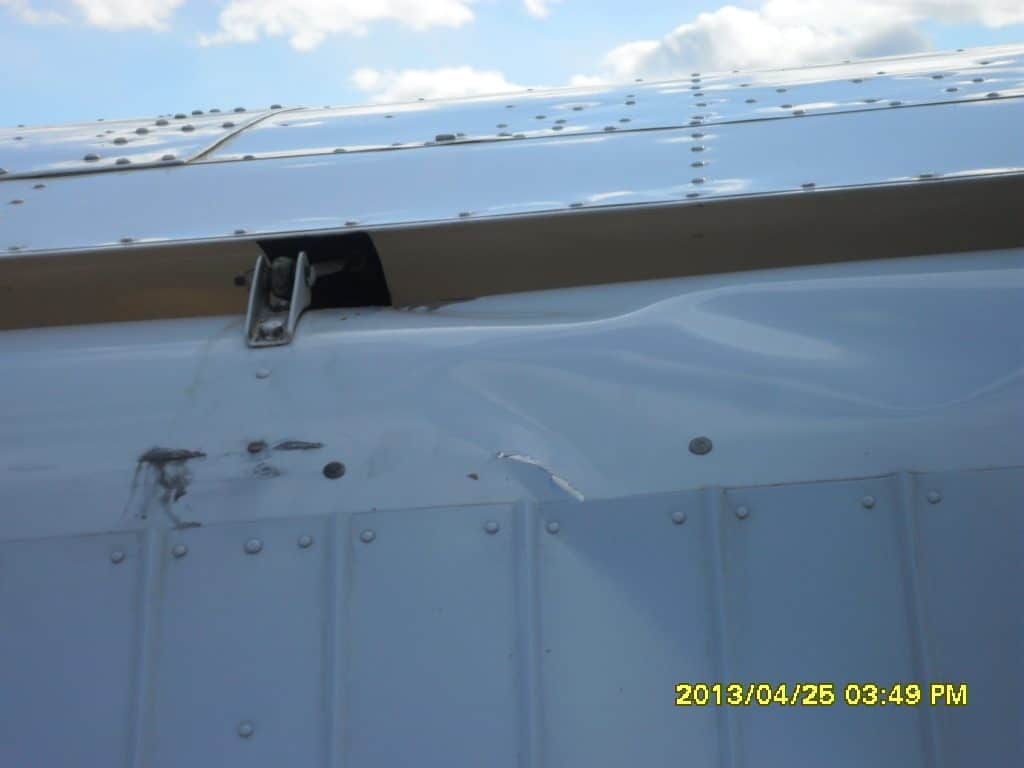
In the first example, the aircraft is a 1970 Cessna 172K. The pilot discovers during her pre-flight inspection that the right wing flap has a large dent on its leading edge, and the aileron “binds” as she attempts to extend the flaps through their full range of travel. May she fly without correcting the discrepancy?
Clearly, the answer is no; we know from 14 CFR 3.5 that this mechanical condition does not meet the definition of “airworthiness.” But who can determine the proper course of action beyond that point? A certificated mechanic with appropriate rating must be consulted. Although the aircraft is neither airworthy nor in “safe condition for flight,” the process begins with the pilot “squawk” of the issue and the mechanic or repair station will take it from there.
Example Two: Piper Arrow
In the second example, the aircraft is a Piper Turbo Arrow III (PA-28R-201T). The aircraft is equipped with a traditional “legacy” stack in the form of two standalone, tray-mounted navcom radios, basic “six pack” primary instrumentation and an IFR GPS. The pilot notes during his pre-flight inspection that the number two navcom radio fails to power up. May he fly without fixing the radio?

